Land & Expand is a series for Indian founders building global enterprise companies from India. In this chapter, the MoEngage's senior leaders, Raviteja Dodda, Narasimha Reddy and Yashwanth Kumar talk about their disciplined growth journey, from India’s mobile-first internet to Southeast Asia’s greenfield market, into an RFP-driven U.S. enterprise motion. MoEngage chose the slower, harder road: win one enterprise logo at a time, let the product do the talking, expanding only when the flywheel actually turned. It’s a story of disciplined growth, leading to their recent Series F investment from Goldman Sachs & A91.
SaaS founders are often coached to go after the U.S. market first, and to do it fast. MoEngage did the opposite.
They started in India, a mobile-first market, then expanded to Southeast Asia, proving their chops, and finally cracking the U.S. Each new geography was unlocked only after the previous one reached maturity in GTM motion.

While competitors spent heavily to make a splash in the U.S. and burned out or faded away, MoEngage quietly hit $100M ARR with multiple markets firing, strong analyst validation, and enterprise credibility. According to co-founder and CEO, Raviteja Dodda,
“We weren’t building a product for a single market. We built a product that earned its passport.”
The mantra: Use blue oceans to build the weapons you’ll need to win in red oceans.
India: Building Where the Category Didn’t Exist
In 2014, India was going mobile-first, but customer engagement as a category barely existed. Most companies relied on email, SMS, or basic push notifications with no visibility into delivery or performance.
Instead of building for the West: a more mature market, MoEngage, focused on where the pain was sharpest: Indian e-commerce and mobility startups like Snapdeal, TaxiForSure, BigBasket: fast-scaling, mobile-first companies with fragmented communication infrastructure. That reliability became the foundation for their brand. Customers didn’t adopt MoEngage because of flashy features—they stuck because the core product worked reliably across scale, devices, and edge cases. It solved their problem, and it kept solving it.
“We always charged from day one. No freemium, no friends-and-family discounts. If people saw value, they paid for it.”
Value over virality was their bet. And it worked. Early wins were hard-earned, but the product developed a reputation as one that "just worked." Customers stuck because the core product worked reliably across scale, devices, and edge cases. The product was so sticky, that many early customers ended up becoming angel investors.
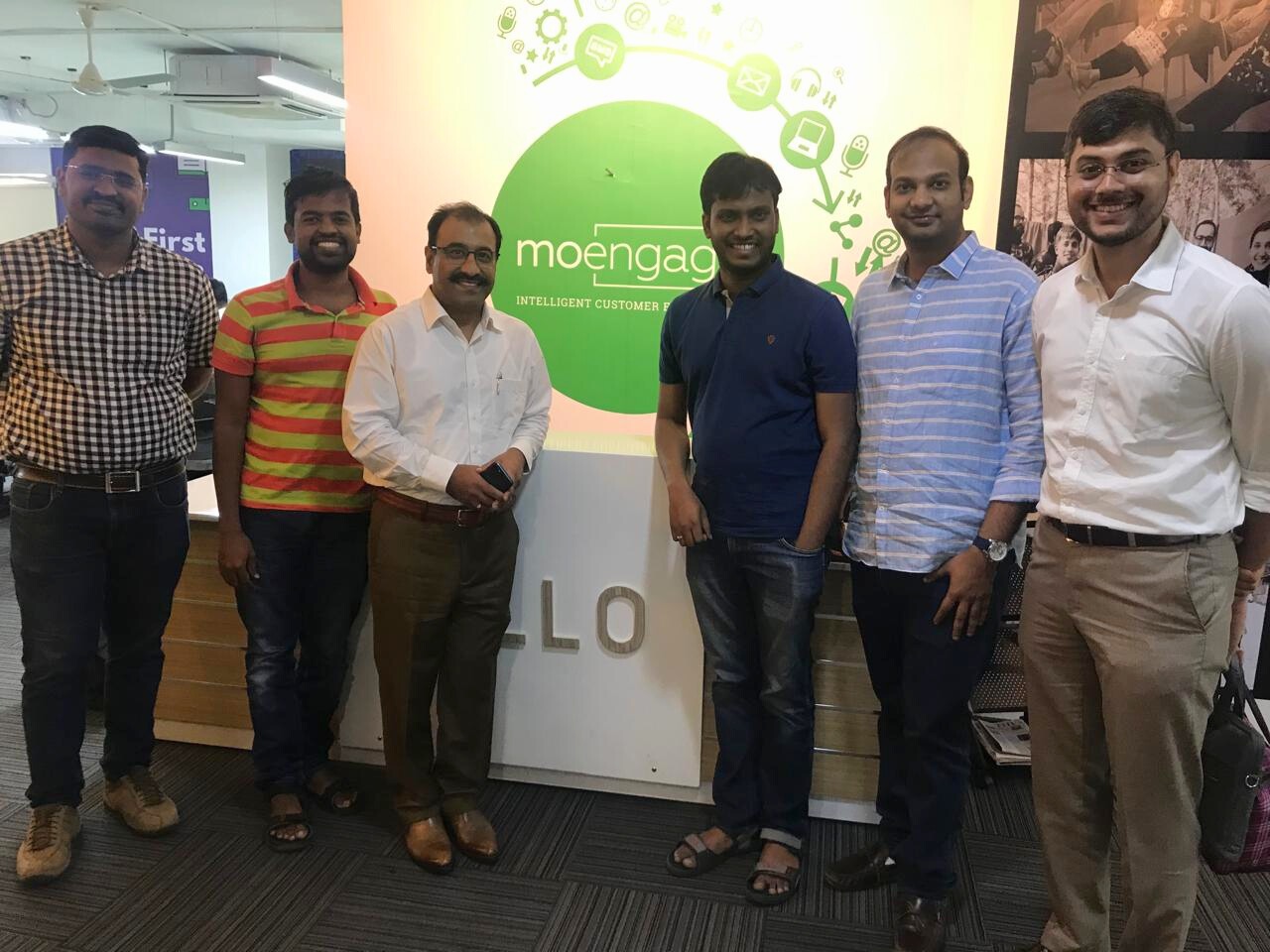
It helped that Ravi and Narasimha Reddy, CFO, kept an ear to the ground: listening deeply, iterating quickly, and building with a sense of urgency grounded in real user pain. This early product-market fit didn’t come from an accelerator or a pitch deck; it came from understanding the constraints of a mobile-first India where delivery rates could make or break customer engagement.
Xiaomi and the Push Notification Problem
In 2017-2018, the team noticed something strange: brands were sending push notifications, but customers weren’t receiving them. The issue was traced back to Chinese OEMs like Xiaomi, whose restrictive settings were quietly blocking push notifications from reaching users, creating a black hole in engagement pipelines.
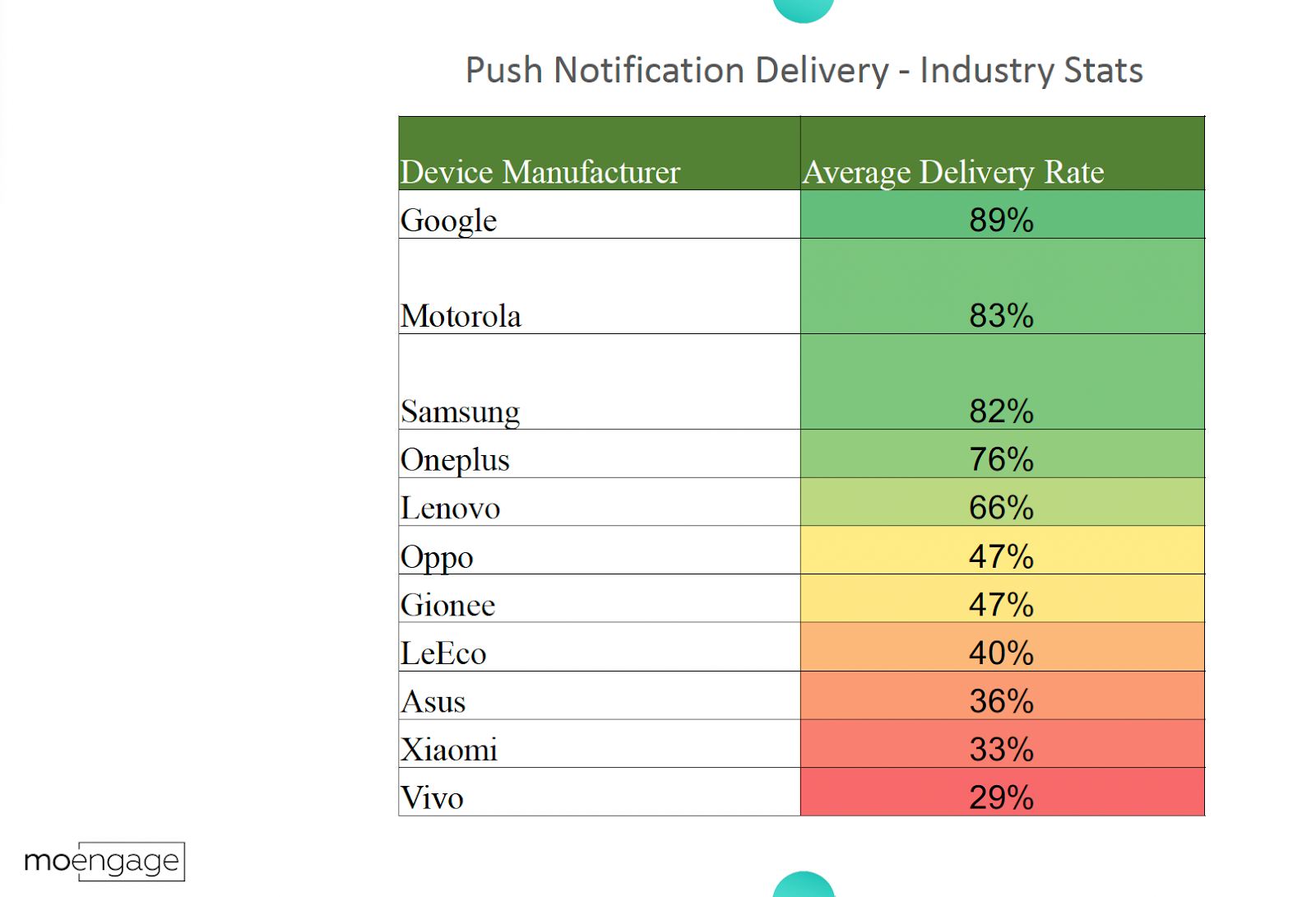
Most platforms didn’t even realize this. MoEngage did, because they were the only ones tracking actual delivery.
“We were the only ones showing true delivery rates. That’s how we even discovered the problem.”
The team made an unconventional call: they flew to China and built a direct integration with Xiaomi’s private push infra.
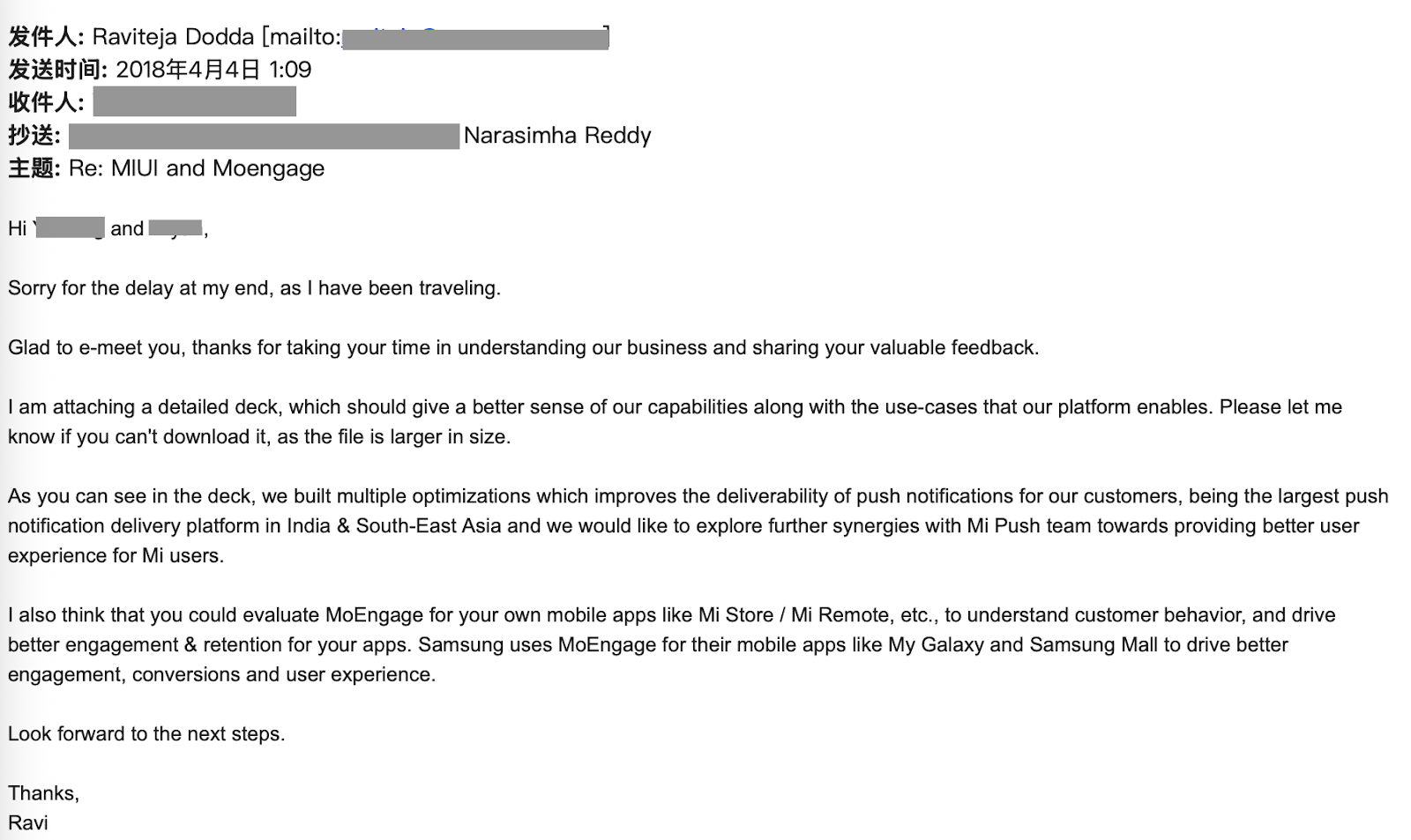
It wasn’t sexy, and it wasn’t fast. But it gave them a near-monopoly on delivery accuracy in India and SEA.
“Push amplification became our secret sauce. It gave us a window of 3-4 years where nobody else could compete.”
It was a mindset win: that deep problem-solving would compound more than slick branding. At the same time, enterprise clients in India demanded more than dashboards: they needed a system of record. Banks needed robust security protocols with global certifications while retailers demanded multi-channel workflows. MoEngage built them all. It pushed the product to evolve and by the time MoEngage entered more mature markets, their stack had been validated, tested and forged, by some of the harshest business environments.
Southeast Asia: Selling Where there’s no Budget
By 2016, most SaaS founders were eyeing the U.S. but MoEngage zagged again. They went to Southeast Asia.
The market was still mobile-first, still early in its software adoption curve, and far less capital-intensive or competitive than the U.S. And unlike India, there was little to no legacy from Adobe or Salesforce to displace.
“We weren’t competing with existing tools. We were often the first software product these companies had ever used.”
They made another bet: that this time, that education would outcompete awareness.

Southeast Asia was a low-noise, high-signal market: mobile-first, software-light, and capital efficient. They set their sights on 10-15 companies. Tokopedia was among the first. There was no spray-and-pray. The team spent months building relationships, conducting onboarding workshops, even translating best practices into local languages.
“SEA was a test of endurance. It took us two years to hit $1M ARR. But those first few logos created the ripple effect.”
This phase also revealed how different Southeast Asian cultures could be: customers in Indonesia wouldn’t directly tell you they were unhappy; in Singapore, sales were more relationship driven, in Vietnam, teams needed more hands-on support.
Southeast Asia helped MoEngage operationalize localization in product, onboarding, training, and customer success. In many ways, it was a test-bed for how to run overseas operations, how to empower local teams, and how to tailor GTM playbook, market by market.
The Strategic Pivot: Staging a U.S. Entry
Ravi and Narasimha knew they’d need to crack the U.S. eventually. But they weren’t going to do it with a bang. They chose a low-burn strategy: maintain a two to four person presence, spend $500K–$1M a year, and gradually, build more credibility in the market.
“The U.S. doesn’t reward speed. It rewards consistency.”
They began showing up to every Gartner inquiry call. Submitting for Forrester Wave. Building relationships with analysts and buyers: one briefing at a time.

By 2020, MoEngage had a credible presence. They had logos. They had analyst recognition. Most importantly, they had context of the market.
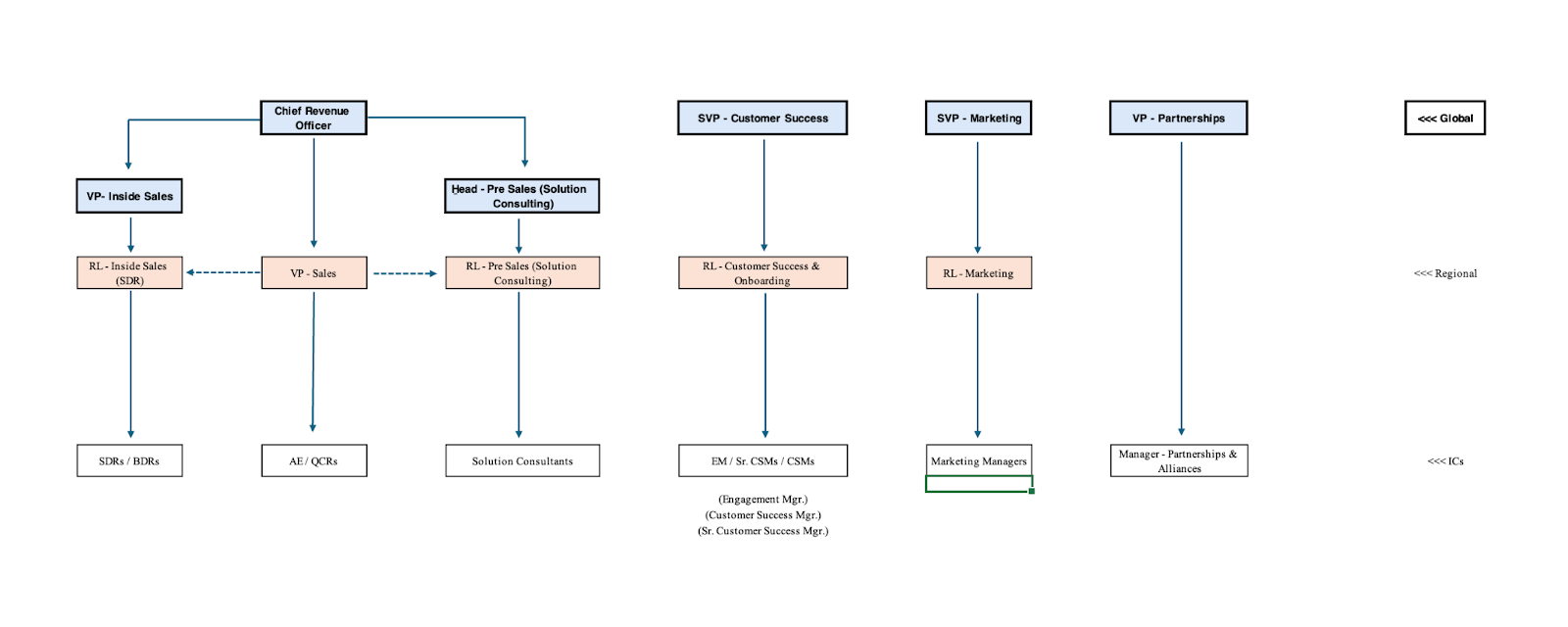
Their structure wasn’t ad hoc. From the outset, MoEngage adopted a regional + functional org model. Each geo had a dedicated P&L owner, often a senior leader with a hotline to the founder, and clear accountability for sales, customer success, and onboarding.
“We didn’t run the U.S. from India. We had a separate cadence, separate ownership. Even when it was just 2-3 people, they were responsible for their numbers.”
This clarity ensured that each region evolved with local market dynamics in mind—rather than as a global HQ afterthought. It also meant MoEngage could test, learn, and adapt without slowing the rest of the business down.
Red Ocean Acceleration: Enterprise-first in the U.S.
The inflection came in 2021. With $25M in new funding and a stable platform, Ravi and team finally leaned in. But instead of going after tech darlings and VC-backed unicorns, MoEngage chose the harder path, targeting the overlooked segment, digital migrators: large, legacy enterprises who were serious about modernization with a deeper evaluation system and had money to spend. These deals took longer to close, but they stuck, expanded, and lifted margin.
“We made a call: Let’s go after companies who were late to the party but serious about staying.”
That meant learning how to win RFPs. Sitting through procurement reviews. Building region-specific compliance features. Ravi himself led the first 10 deals. It was slow, but intentional.
“I remember flying cross-country to meet a single prospect. That’s what it took to get our foot in the door.”
MoEngage focused on quality over quantity: enterprise accounts that expanded over time, added multiple modules, and contributed to long-term gross margins. They turned down deals that eroded margin, refused deep discounting, and built a capital-efficient ops engine. That discipline helped them sustain 70%+ gross margins, even as they scaled. Today the U.S. is their fastest growing market, contributing 30% of MoEngage’s revenue, and continues to double year-on-year.
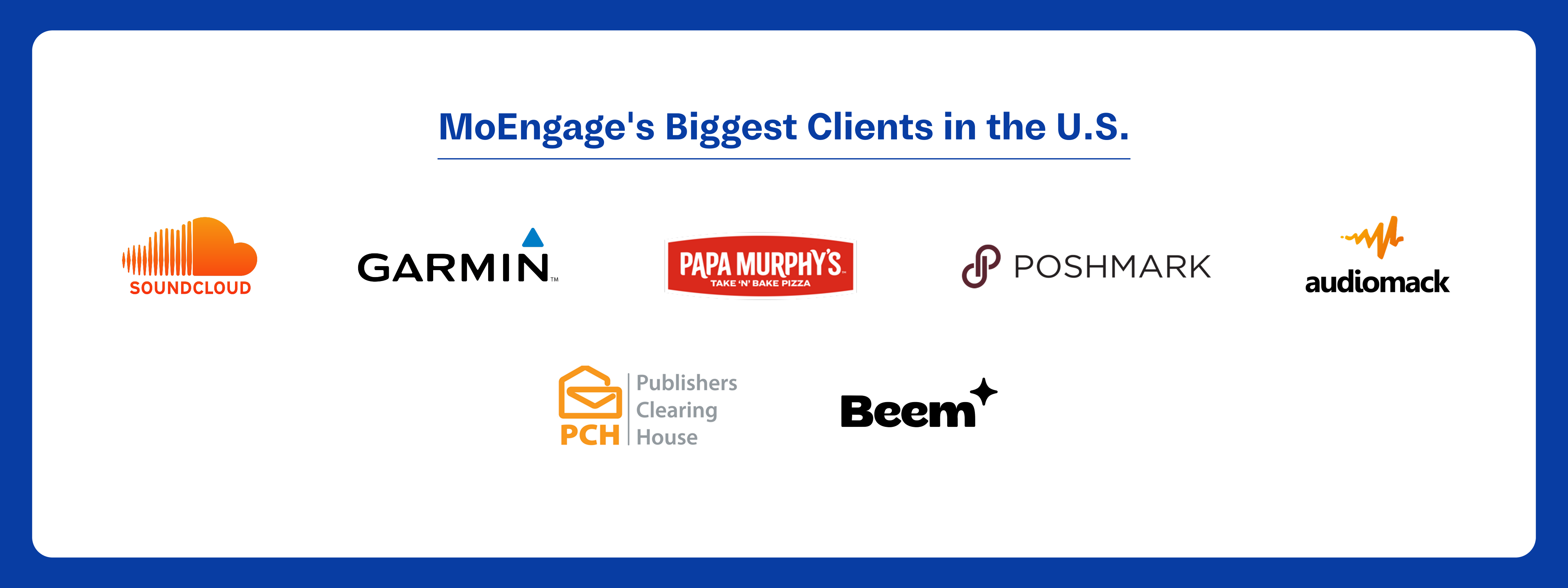
Making Multi-geo Work
MoEngage didn’t jump geographies. They earned them, through deliberate sequencing, patient market-building, and operational discipline. Here's how they approached the challenge:
The Framework
- Category maturity: Create the category in blue oceans; compete where it’s crowded.
- Capital constraints: Avoid red ocean burn in mature categories like Marketing Automation, unless your product is truly ready.
- Credibility strategy: Build analyst and customer references long before aggressive GTM.
- Market graduation: Don’t expand because you think you need to. Expand when you’re stable.
Execution Discipline
“We never subsidized one region with another. Every market had to stand on its own legs.”
Each region operated with autonomy and accountability:
- Dedicated pods for sales, CS, and marketing
- Bottom-up planning, with teams owning their numbers
- Product localization for every market nuance: from RTL layouts to WhatsApp workflows
The Payoff: A Resilient, Diversified Growth Engine
By the end of 2025, MoEngage will cross the magical $100M ARR milestone: with customers spread across the U.S., India, Southeast Asia, and EMEA. Their market sequencing meant that no single region dominated, and each engine was built with margin discipline and local accountability.
Their competitors who had gone all-in on a single market were left scrambling. MoEngage, in contrast, had options, buffers, and momentum. Being late to the U.S. gave them time to arrive prepared.
Sequencing, Staying Power, and Scale
MoEngage’s journey is a masterclass in doing the hard things first, building credibility before chasing scale and choosing to compete only after earning the right to.
“The learnings we had in India and Southeast Asia helped us enter the U.S. with eyes wide open.”
Ravi, Narasimha and the team wrote their own playbooks: one market, one team, one relationship at a time. And when the tides turned: when capital dried up, categories crowded, and competitors faltered, they had something most didn’t: resilience built on real momentum, and a roadmap paved with intentional decisions. Their story is a reminder:
You don’t need to win every market at once. You just need to win the right ones, in the right order, and on your own terms.
MoEngage prepared for competition. They used blue oceans to build product, team, and muscle, so that by the time they reached red oceans, they were ready to win. They weren’t the loudest brand at conferences. But in every geo they entered, teams remembered them as the ones who showed up, executed reliably, and left behind working systems. It was quiet, heads-down growth: built to last.
As founders navigate increasingly complex global markets, this story offers a pragmatic lens: scale isn’t the reward for going big; it’s the byproduct of going deep. So before you launch your next region or vertical, ask: Have we earned the right to play there?
MoEngage did. And they did it on their own terms.
Ready to apply the same sequencing strategy?
We’ve distilled MoEngage’s approach into a tactical checklist founders can use to plan their own multi-geo moves.
%20(1).png)



.jpg)
.jpg)
.png)
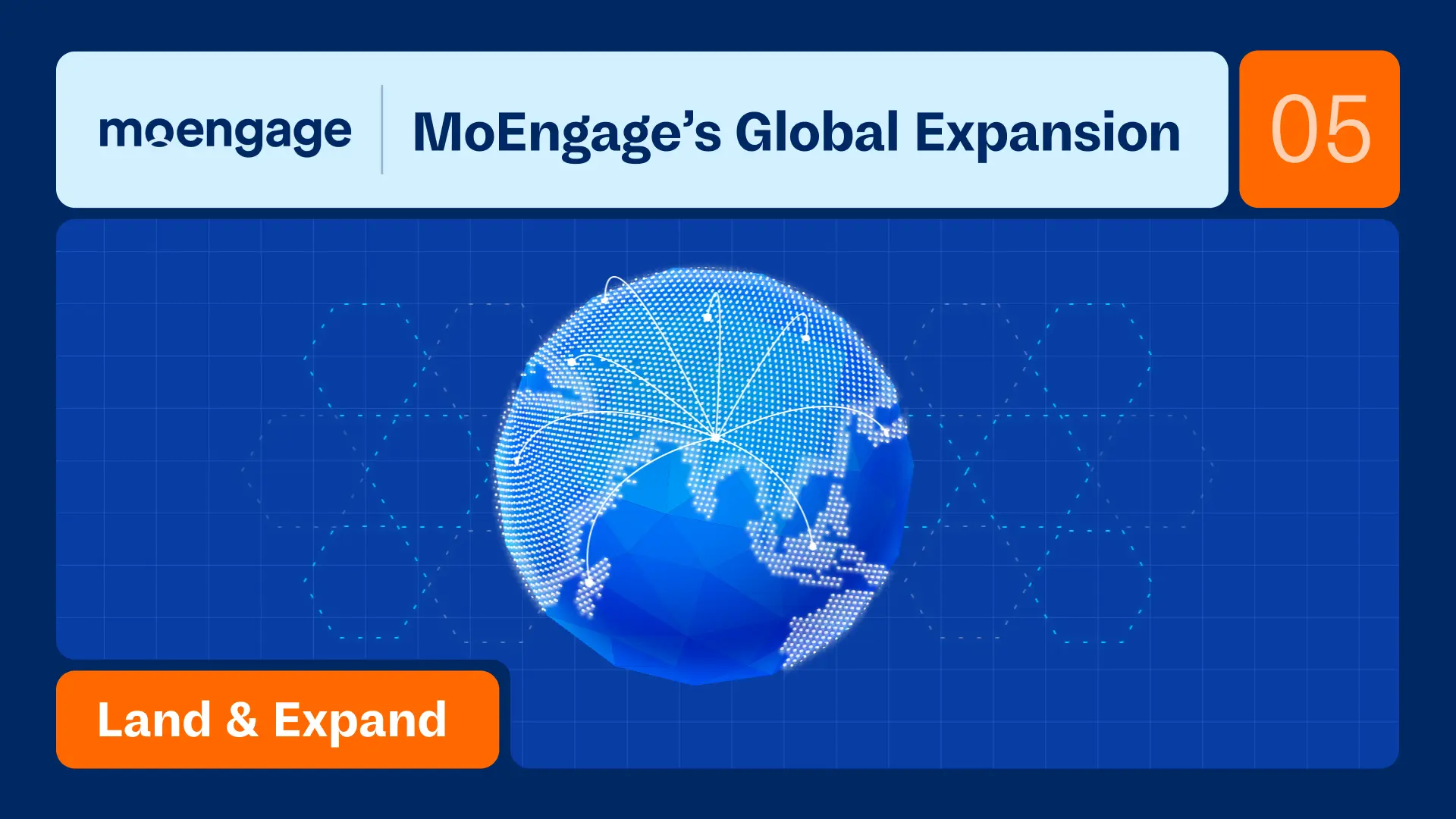


%20(1).png)
.svg)



%20(1).jpg)